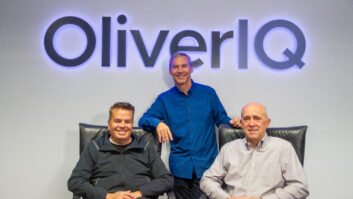The latest home-network developments include the introductions of some of the first wireless 802.11a products, one of the industry’s first HomePlug-based powerline network devices, a wireless HomeRF data/voice gateway from Siemens, and multiple HomeRF devices from Motorola.
Here’s what dealers can expect to offer in coming months:
Actiontec: The company has begun shipping a 54Mbps IEEE 802.11a wireless network card at a suggested $149. It fits in any notebook, handheld or desktop computer with a 32-bit cardbus port.
Belkin: The company’s first Bluetooth adapters are due in April and will complement WiFi 802.11b wireless network products that have been available for about three months.
The Bluetooth adapters will include a USB adapter and a printer adapter, each at a targeted everyday $100. Also coming are a $100 CompactFlash card for laptops and PDAs, and a $100 PCI card for desktop PCs.
The Wi-Fi devices include a $199-everyday four-port router, $99 PC Card, $99 PCI card, and $159 Access Point, which is a bridge with wired Ethernet networks.
Home PNA: The Home Phoneline Networking Alliance introduced its Voice-over-HomePNA (VoHPNA) protocol, which delivers broadband phone service from cable or DSL modems to phones connected to VoHPNA modules.
The organization also said the planned HPNA 3.0 standard, which will deliver data at Ethernet speeds up to 100Mbps, is schedule for finalization in the fourth quarter. The 2.0 spec delivers data up to 20Mbps.
Magis: The chipset maker said it’s working out an agreement with a set-top box maker to incorporate Magis’s chipsets incorporating the 54Mbps IEEE 802.11a home network standard. The set-top box could be used to wirelessly transmit HDTV signals throughout a house.
“Multiple streams of [standard definition] satellite digital video and audio can be delivered wirelessly while maintaining their original quality,” the company pointed out.
Motorola: The company’s broadband communications sector, based in Horsham, Pa., has developed multiple products based on the wireless HomeRF network standard. One is its first wireless “digital audio receiver,” the $379-suggested Simplefi, which streams downloaded music files or Internet radio stations from a PC in another room to a Simplefi-connected stereo system. Simplefi includes a HomeRF adapter for the PC.
Simplefi was due on the company’s Web site after CES, and Motorola is in talks with retailers.
The company plans to support other wireless standards in future receivers.
Also new from Motorola is the wireless EVr-8401 Enhanced TV Viewer, which uses the HomeRF and IEEE 802.11b wireless standards to connect to similarly equipped cable modems to access Internet content related to a TV program that a user is watching.
There is also an $899-suggested DVD-receiver that incorporates a digital cable receiver. DCP 501 features include single-disc CD/DVD player, 5×100-watt amp and an AM/FM tuner. Future versions could include home network technologies. Distribution will be through cable operators and retailers.
Phonex Broadband: The company has unveiled what could be the industry’s first HomePlug-based powerline network devices when they ship in production quantities in late March. The company’s NeverWire 14 nodes retail for a suggested $129. The Dayplanner-size nodes connect to PCs and broadband modems via a wired Ethernet connection. The node in turn plugs into a standard electrical outlet, turning a home’s electrical wiring into an Ethernet-grade network.
Throughput averages 5Mbps to 8Mbps.
It will be sold initially though Phonex’s Web site and then be opened up to VARs and potential OEM private-label partners, the company said.
Siemens: Second-quarter shipments are planned of a wireless voice/data gateway that uses HomeRF 2.0 10Mbps wireless technology to distribute broadband Internet access and up to four standard telephone lines throughout a house.
It’s targeted initially at DSL and cable broadband carriers, who will be able to buy a two-line and a four-line model in the second quarter. A two- and four-line model with built-in digital answering machine is due to carriers in the third quarter.
Each gateway supports up to eight registered cordless HomeRF handsets, four of which can be used simultaneously for voice calls and for handset-to-handset conversations. The gateway needs an uninterruptible power supply to maintain phone service during a power blackout, the firm said.
Initially, a Windows Address Book application will enable users to drag and drop phone numbers from a PC to the handsets. The answering machine models will ship with ability to drag and drop Microsoft Outlook names and numbers to the handsets.
Siemens is also lab testing a gateway that will allow phone service over a DSL or cable modem.













